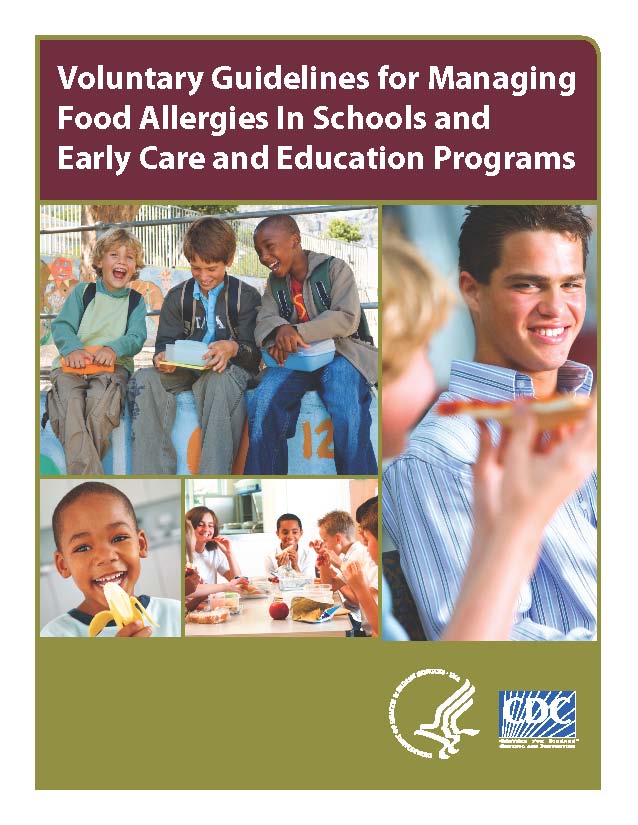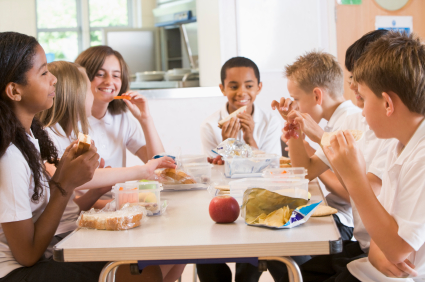 This is a first in a series of posts about how do deal with food allergies in social situations. Over the series, I am reaching out to a few experts to help guide us through the many lifestyle conflicts confronting Tender Foodies as children, teenagers and adults.
This is a first in a series of posts about how do deal with food allergies in social situations. Over the series, I am reaching out to a few experts to help guide us through the many lifestyle conflicts confronting Tender Foodies as children, teenagers and adults.
Stress For Parents
School has started, and for parents of young kids with food allergies, this can be an extremely stressful time. Important questions crop up that seem strange to others, even family members. Questions like: Will other kids bring peanut butter sandwiches into the class or lunchrooms? Will he be teased? Will she feel left out? Will my child remember what foods will make him sick? Does she know to reject any food that is offered? Will the teacher, nurse or counselor know how deadly one microscopic allergen in the air can be? Will my child have a life threatening reaction? Will school staff know how to handle it, if that happens?
School Awareness
Some schools are very aware of the dangers of food allergies and have strict policies to protect allergic kids. Knowing that your school “gets it” helps a great deal. On the other hand, there are many schools that have not educated their staff nor have they implemented policies. In a recent study (released Sept. 8, 2011), The Food Allergy and Anaphylaxis Network and Galaxy Foods addressed the emotional impact of food allergies. According to their data, the majority of parents surveyed (54%) indicated that teachers had a “good” or “excellent” understanding of food allergies, and 53% of these parents indicated that administrators also had a good understanding. We can take heart that overall awareness is improving. But that also means that 47% of schools where food allergic kids are at higher risk.
Whether you are in a highly aware school or not, the question still remains: how do parents deal with the emotional and social impact of food allergies in a school setting?
Interview with Melanie Potock, MA, CCC-SLP
 Melanie Potock, MA, CCC-SLP of MyMunchbug.comTo start this conversation, I spoke with Melanie Potock, MA, CCC-SLP, of www.mymunchbug.com. Melanie is speech language pathologist who specializes in feeding. Her work brings her into the homes and schools of her clients, kids, who for various reasons have difficulty with food or with eating. She works with kids and their parents to develop effective strategies that help children become “more adventurous eaters”. At least 50% of her clients have food allergies or intolerances, and for them, “adventurous eating” takes on a special meaning.
Melanie Potock, MA, CCC-SLP of MyMunchbug.comTo start this conversation, I spoke with Melanie Potock, MA, CCC-SLP, of www.mymunchbug.com. Melanie is speech language pathologist who specializes in feeding. Her work brings her into the homes and schools of her clients, kids, who for various reasons have difficulty with food or with eating. She works with kids and their parents to develop effective strategies that help children become “more adventurous eaters”. At least 50% of her clients have food allergies or intolerances, and for them, “adventurous eating” takes on a special meaning.
TF: What type of clients do you work with? Tell me more about the work that you do.
MP: The majority of my clients are referred to me by gastroenterologists because they are having difficulty eating a variety of foods. At least 50% of the kids that I see have food intolerances or allergies and often, severe GI conditions including FPIES (Food Protein-Induced Enterocolitis Syndrom) or EoE (Eosinophilic esophagitis). These children have learned over time that food makes them feel uncomfortable, which leads to food selectivity and often, a fear of trying new foods. Delayed oral motor skills and sensory processing difficulties can be part of the big picture.
TF: What do you see as the main social dynamic around school lunch?
MP: Many kids learn to eat well at home, but need additional support learning to negotiate the hustle and bustle of the school cafeteria, where they are expected to get their lunchbox, find a seat, open the containers, eat and then put it all away in as little as 20 minutes. My role is to learn the culture of the individual school lunchroom and offer suggestions to parents and school staff on how to set the child up for success so they can focus on what is most important to kids: their friends. Parents tend to focus on nutrition at lunchtime; kids tend to focus on friendship.
TF: What are the top 5 things that mothers and dads tend to worry about when sending a food allergic child off to school?
MP: In my experience as a feeding therapist, the most prevalent worry is that...
A) their child will ingest a food that they are allergic to and
B) help will not arrive in time.
Naturally, these issues are troublesome to parents. Others on the list include “Is he getting proper nutrition?” and “Will other kids tease him if he can’t join in on a special treat at school?” coupled with, most importantly, “…and how will that make my child feel?”
TF: What can parents do to alleviate those fears?
MP: Communication is always the key. Here are three steps you can take right away.
- Have a face-to-face conversation with teachers and administrators and write down your concerns, giving everyone a copy.
- Include simple bullet points that are easy to refer to, such as list of allergens, symptoms, emergency steps, the specific location of the epi-pen, how and when to administer them and any other medications and contact phone numbers.
- Form a school team: A face-to-face meeting can alleviate fears and it establishes that your child's food allergies is an issue for everyone on the team – you child’s team! Be sure to periodically thank a staff member, teacher or administrator for their extra efforts. It not only makes them feel appreciated, but it gently reminds them of your fear and their role in keeping your child safe.
TF: What if you find that teachers and the school are resistant to forming a team for your child?
MP: There are so many nuances.
First of all, just like with any other situation, it is more difficult for someone to understand food allergies if they haven’t experienced it themselves, first hand. Teachers are overwhelmed, today. If you keep this in mind, it will help keep the conversation (and food allergy education) going. It is a delicate dance – being respectful of your child’s teachers and wanting to protect your child.
Second: it is a temptation to overwhelm the school with a long list of detailed requirements for the school environment itself. Meet with the teacher and the principal and try to keep your list of requirements short – condensed into most essential action steps. If you can reduce your child’s needs to say, 3 overall school requirements, it is easier for the teacher to remember and the school to follow.
Third: If serious change is needed, you could approach the School Board. School Boards usually set up budgets and policies one year in advance. There are groups that will do a formal “in-service” education or policy setting session. If you can find a local resource to do in-school training for free, food allergy training might be adopted more immediately.
Another option: you can research your school district’s disability laws, like Section 504 of the Rehabilitation Act of 1973*. School districts have an obligation to provide reasonably safe environments for all students. Some schools include food allergies under Section 504.
TF: How do parents balance their child’s needs and their own desire for nutrition when packing a lunch?
MP: For kids in the school cafeteria, lunchtime is about friendship. As parents, we are focused on nutrition, but kids just want to fill their bellies and laugh with their friends over lunch! They need to let off a little steam, just like you and I taking a break for lunch and to get away from the pile of paperwork on our desks. So, pack nutritious finger foods in easy to open containers. I always recommend Easy Lunchboxes (www.easylunchboxes.com) to my clients, because the lid is so easy for little fingers to pop off. Instantly, lunch is served! When kids have to fumble with a bunch of different containers, food often never gets eaten at all. If you can pop off one lid and instantly see what Mom and Dad have offered you for lunch, you have more time to socialize and chill-out. Choose easy to eat foods – simple, fresh, finger foods so your kids can “grab and gab” for the next 20 minutes before the bell rings.
TF: How can parents best help their kids "remember" all of the things that they are allergic to?
MP: There is typically no sharing in the school cafeteria (theoretically!) but other opportunities to eat foods other than those brought from home arise during a school week, which can become more of a problem. **
- Laminate a picture list of allergens (or a word list if your child can read) and attach it with a ring to an inside pocket of his or her backpack. It’s an easy referral source for your child to take a peak if he/she forgets.
- Ask the teacher to attach the same list somewhere on her desk and to give your child special permission to check it any time. That way, it is a quick reference for both of them.
- Make up a silly song or jump rope rhyme that helps kids remember, such as “Oh boy, I can’t eat soy! Oh Mary, I can’t eat dairy. BUT, I can eat everything, everything, and everything else!”
- At home, play table games that include “I am thinking of something that contains soy and it rhymes with “So new! (Tofu)” to practice what foods contain the allergen. My friend Marika, who has 4 year old twins with food allergies and/or intolerances, always uses a trip to the zoo to teach about peanuts. “The elephants can eat peanuts, but they can’t eat hamburgers, because that would make their tummies sick. You can eat hamburgers, but you can’t eat peanuts, because those make you feel sick.” She is really great about casually teaching very important facts in a fun way whenever she finds the opportunity to remind the twins of what they can and cannot eat to stay healthy.
TF: How can parents best help their kids stand up for themselves when faced with other kids, temptations and ignorant teachers/school authorities?
MP: Teach them to keep their reply simple and move on. The less attention given to the situation/person the better – that is true in any situation where someone is trying to convince our children to do something that is not good for them. For example, “No thanks, I’m allergic. I have crackers for my snack today” or “No thanks; I’m going out to recess.” With or without allergies, helping all kids listen to that little voice in their head that tells them “this is not safe” is so important! In my professional opinion, I think children who learn this skill early on make better choices throughout life.
TF: Could you recommend a lunch that leaves out all 8 big allergens (seafood, fish, gluten, dairy, soy, tree nuts, peanuts, eggs) + the next big 3 (oats, rice, corn) that kids actually like?
MP: I love to send a healthy, frozen home-made smoothie to school, because you can customize it for specific dietary needs and it is quick and easy to eat. Any container with a lid or flip top will do and kids can add a wide straw or just drink it right out of the container, as it typically thaws just in time for lunch. Then, a bento box of simple finger foods is always a snap! Allergen-friendly mini muffins are filling and easily fit into these types of containers and are so quick to eat. They can be made with vegetable purees to ensure good nutrition.
TF: Can you speak a little more toward the social aspect of school lunchtime and how you can help your kids adapt?
MP: When I visit school cafeterias with my little clients, I sit right at the tables with all the other kids and watch and listen. Without fail, kids open their lunchboxes and begin to talk about what they have in their lunch that day: “I have pudding!” or “I have yogurt”, holding it up for their friends to see. Honestly, the funny thing is it’s not really about the food. It’s about opening up a conversation with their friends, much like saying “cheers” before we enjoy a beverage together. So, whether it’s coconut yogurt or milk-based, the kids don’t typically say that. They just say “yogurt”. Now, they might say “I love Dora!” and hold up a yogurt with Dora the Explorer on the package, but I’ve observed that they love a Spiderman sticker stuck on their coconut yogurt just as much as a pre-printed package photo of the super hero. So, add a few stickers here and there for your kids to hold up and show their friends. Make gluten free sandwiches with dino cookie cutters so they can proudly bite off the head of the T-Rex in front of all their buddies. Throw in a photo of your family garden (or your kid picking out carrots at the local farmer’s market) so he can show it at the table and say “I bought these with Grandma at the Farmer’s Market!” Get the conversation started…that’s the key.
Many thanks to Melanie for sharing her time and insights with the Tender Foodie Community.
REFERENCES
* Along with Section 504, other Federal laws such as ADA and FERPA could address food allergies.
**According to the U.S. Peanut and Tree Nut Registry, 79% of recorded allergic reactions to nuts occurred in the classroom, usually as a result of contact with peanut butter during class projects, rather than the cafeteria (12%). Other studies have shown a similar weighting toward classroom allergic reactions because of birthday parties, shared treats and art projects using molding dough (Playdough, for instance, contains wheat).
Other RESOURCES
The University of Michigan Food Allergy Program: http://www.med.umich.edu/foodallergy/community.htm
(check universities near you for school programs)
The Food Allergy and Anaphylaxis Network (FAAN)
www.foodallergy.org
American Academy of Allergy, Asthma and Immunology. (AAAAI). http://www.aaaai.org
National Association of School Nurses. http://www.nasn.org
Kids with Food Allergies Foundation: http://www.kidswithfoodallergies.org/community.html
 Wednesday, October 30, 2013 at 12:24PM
Wednesday, October 30, 2013 at 12:24PM  Elisabeth Veltman, The Tender Foodie tagged
Elisabeth Veltman, The Tender Foodie tagged  anaphylaxis,
anaphylaxis,  child,
child,  emergencies,
emergencies,  epinephrine,
epinephrine,  food allergy,
food allergy,  food allergy and 14 bullying,
food allergy and 14 bullying,  life-threatening allergy,
life-threatening allergy,  peanut allergy,
peanut allergy,  pediatric,
pediatric,  school
school  Email Article
Email Article  Print Article in
Print Article in  Culinary Institutes,
Culinary Institutes,  Food Allergy Facts,
Food Allergy Facts,  Food Allergy Training,
Food Allergy Training,  Going to School,
Going to School,  Parents/Kids
Parents/Kids 












